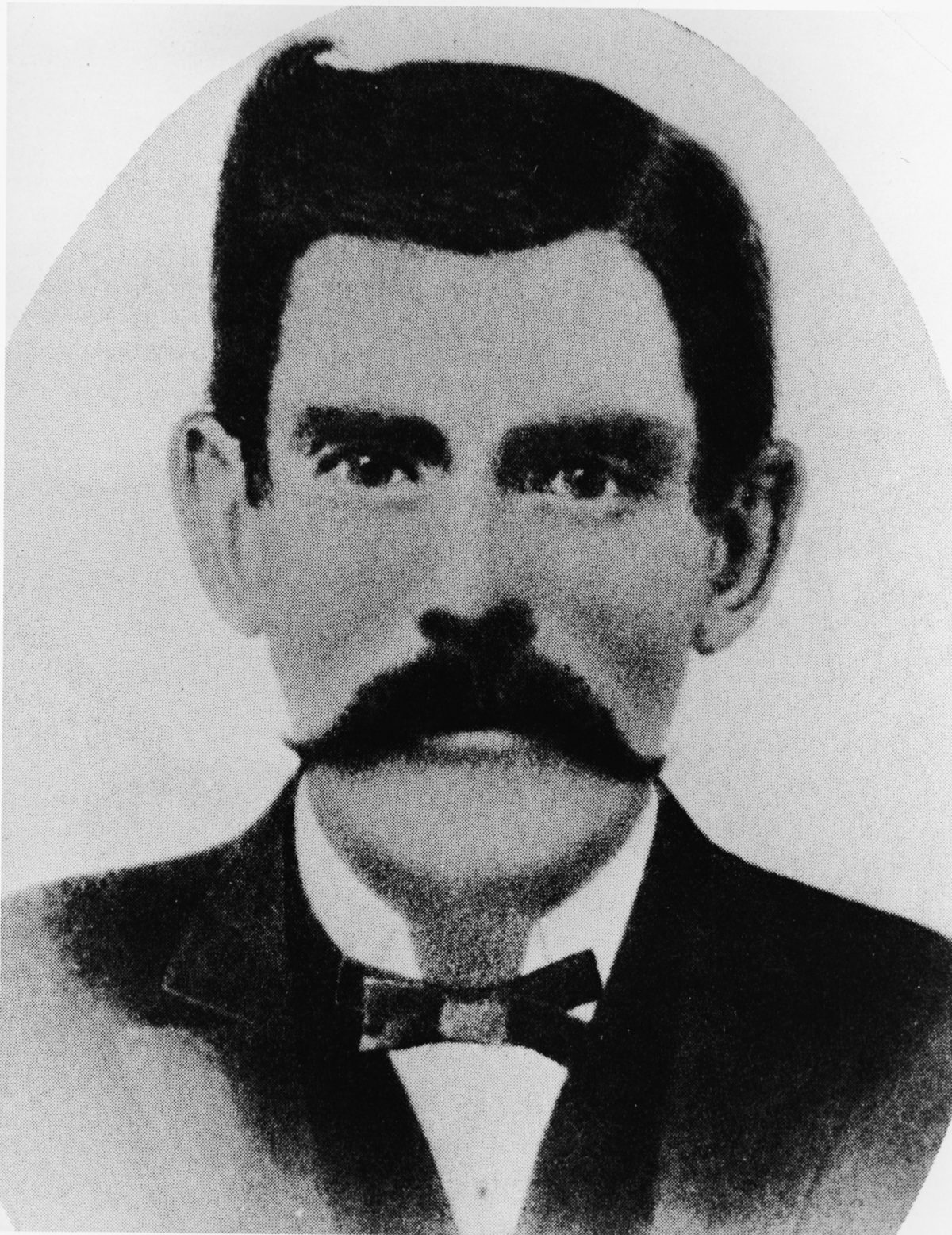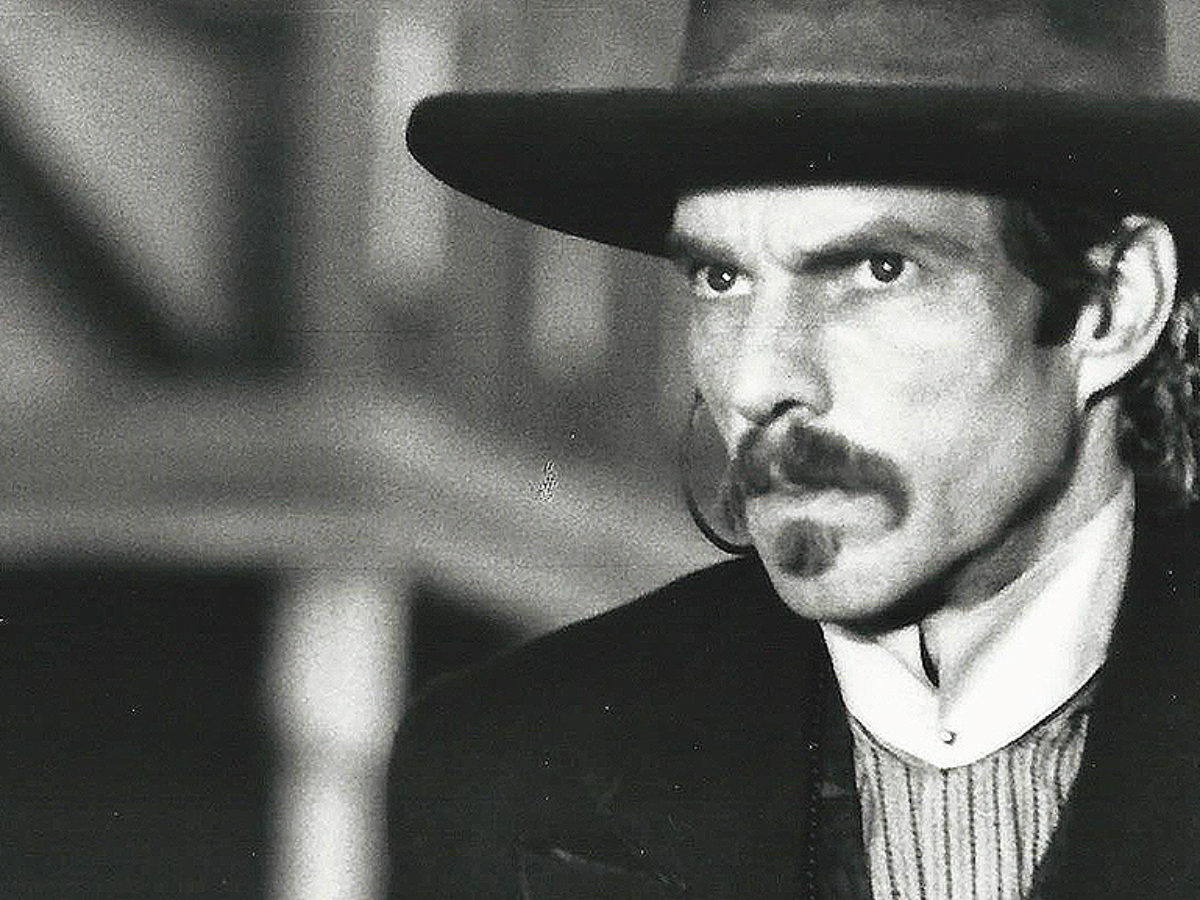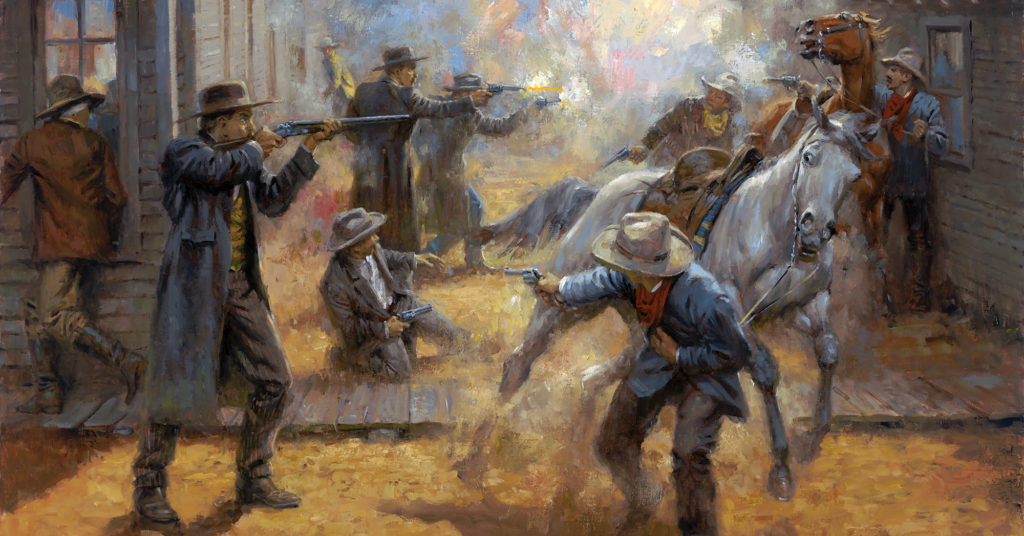After Val Kilmer electrified the Western film world with his portrayal of Doc Holliday in the 1993 movie Tombstone, Holliday re-enactors soon outnumbered Wyatt Earp re-enactors in the town of Tombstone. And at an Old West gunfighter seminar held there not long after the film’s release, one Doc Holliday clone bragged he had already watched Tombstone more than 200 times—not because it was a Wyatt Earp movie, but because it had now become a Doc Holliday movie, thanks to Kilmer’s performance. Kilmer’s Doc carries an ivory-gripped, nickelplated Model 1877 Colt Lightning/Thunderer double-action revolver in a shoulder holster as his first weapon of choice. He also carries an ivory-gripped Colt Single Action Army model in a hip holster.
But in real life, what weapons did John Henry “Doc” Holliday actually carry?
When I was writing for Guns & Ammo specialty books in 1974, we published in softcover Guns of the Gunfighters, reprinted in hardcover with the title Guns and the Gunfighters. A gun-trading pal of mine, Dix Larson, wrote the chapter on Doc Holliday’s guns. But I was unimpressed by the historical provenance of any of the weapons, particularly a 12-gauge double-barreled shotgun that had been sawed off at both ends to make it less conspicuous when carried. And an April 1997 True West article even called this cut-down shotgun a “whipit gun,” because Doc could “whip it out” fast from a shoulder strap.
But I still can’t convince myself Doc ever regularly carried a double-barreled shotgun, sawed off or not. Because of his losing battle with tuberculosis, he was purported to have weighed only about 130 pounds and would have been too frail to easily handle the mule-kick of a shotgun going off in his hands.
Shotguns just weren’t Doc’s style, especially at a gambling table in a crowded saloon.
The only shotgun I know of that Holliday definitely used was the one Chief of Police Virgil Earp took out of the Wells, Fargo office in Tombstone and Doc used to mow down Tom McLaury in the street fight behind the O.K. Corral on October 26, 1881. But that shotgun disappeared and, as far as I know, has never turned up.
In Wild West ’s June 2001 Guns of the West, I wrote about a 12-gauge double-barreled shotgun Wyatt Earp had sold in Quartzsite, Arizona Territory, about the time of Virgil Earp’s death in 1905. Wyatt swore it was the shotgun Doc had used in the O.K. Corral shootout. The trigger sears had been altered to enable both barrels to be fired at the same time. The story had strong provenance, and the most interesting aspect of it was that it was a “hammerless” model, lacking outside “mule ear” hammers. Witnesses of the shootout said Doc had thrown down the gun after he had fired it, so it’s possible the double-barreled kick of the shotgun had surprised Doc, and it had simply jumped out of his hands when it went off. The sources who told me about the gun said its maker had a double name. So it could have been a British Anson & Deeley, which in 1881 was being marketed in the United States by Harrington & Richardson and was the first hammerless double-barreled shotgun sold in the States. But the gun had been stolen in the 1950s, and I never saw it. And it hadn’t been Doc’s personal gun, anyway.
The only revolver I know of that can be absolutely documented as having belonged to Doc is a cap-and-ball Model 1851 Navy Colt revolver with a standard 7½-inch barrel, Serial No. 198418, with its original holster. Doc’s uncle Dr. John Stiles Holliday gave his nephew this Navy Colt after the Civil War. After Doc died in 1887, it was kept in a Holliday/McKey family safe deposit box until the family sold it in the 20th century.
In her 1998 book Doc Holliday: A Family Portrait, Holliday family descendant Karen Holliday Tanner further documents this Navy Colt and adds that Doc carried it through 1874 before cartridge revolvers replaced cap-and-ball revolvers. Tanner also describes Doc’s August 19, 1884, showdown in Leadville, Colo., with badman Billy Allen. Based on a contemporary newspaper account, she believes Doc carried a .41-caliber Colt double-action Lightning/Thunderer that day when he shot but didn’t kill Allen. But she quotes another newspaper that claims the gun was a short-barreled single-action Colt .44.
Tombstone aficionados also know that on October 10, 1880, Doc shot and wounded saloon owner Milt Joyce and his bartender with a borrowed revolver described as a “self-cocker,” meaning it was double action and could be fired by squeezing the trigger without having to first cock the hammer. Several witnesses also noted Doc used a nickel-plated revolver a year later at the shootout near the O.K. Corral.
Recommended for you
The only credible source I am aware of that describes Holliday’s preference in six-guns is in Stuart Lake’s 1931 biography Wyatt Earp: Frontier Marshal. Lake quotes Wyatt as saying that after Doc fired the borrowed shotgun he used during the shootout near the O.K. Corral, Doc “jerked the nickel-plated Colt’s, which was for years his favorite weapon.”
And so, many historians have rolled all this trivia into arming Doc Holliday re-enactors with a nickel-plated Colt Lightning/Thunderer Model, even though there is no particular Colt definitely documented as having been used by Doc, and even though there were a handful of other self-cocking revolvers on the market Doc could also have used.
Doc is also supposed to have been pretty handy with a knife. He has been credited with carving up gambler Ed Bailey almost to death in a card game in Fort Griffin, Texas, in 1878, even though there is little evidence the incident actually happened. And in his 2006 book Doc Holliday: The Life and Legend, historian Gary Roberts tells about Doc running off from his hometown of Valdosta, Ga., in the spring or summer of 1873, after stealing his cousin Tom McKey’s fighting knife, which “Tom had made from a meat cleaver and carried with him through the Civil War.” Roberts adds: “The knife, which Tom called the ‘Hell Bitch,’ was heavy, long bladed and double edged in the manner of a bowie knife. Doc left behind the sheath, which remained with family members.”
Recently a neighbor brought me photos of a magnificent Michael Price–made San Francisco bowie knife his wife had inherited that is alleged to have been Doc’s knife. Price was legendary for making the finest quality gentlemen’s fighting knives in California, many of which Confederate soldiers and officers carried during the Civil War. So the knife fits Doc’s aristocratic Southern upbringing to a “T.” About 10 years ago, the neighbor had sold it for his wife for $5,000, without placing any extra value on it for having been Doc’s knife. Doc, according to the family history of the knife, had given it to one of their ancestors, a miner named Hansen, near Bisbee, Arizona Territory, during the 1880–82 period when Wyatt Earp and Doc were becoming living legends in nearby Tombstone. Holliday supposedly gave the knife to Hansen because the miner had treated an injury or bullet wound from which Doc was suffering at the time. Unfortunately, like the “O.K. shootout shotgun,” I never saw the knife. But the photos might be enough to tempt Doc Holliday re-enactors to carry copies of it along with their ivory-gripped Colt Lightning/Thunderer revolvers.
Originally published in the October 2014 issue of Wild West.








